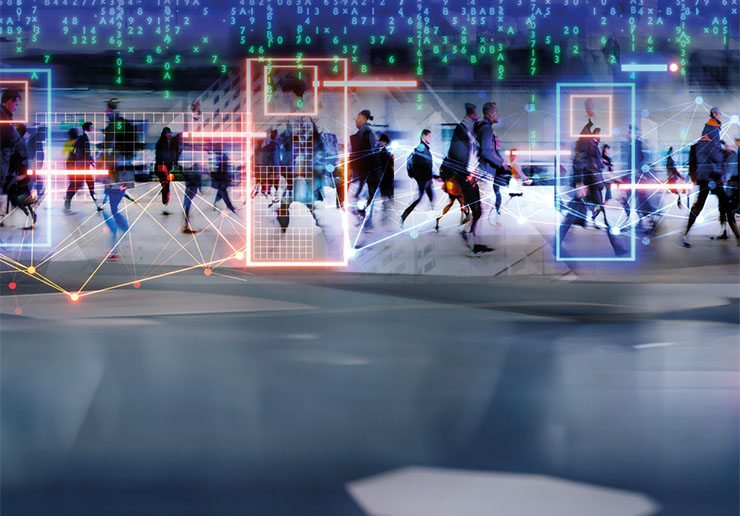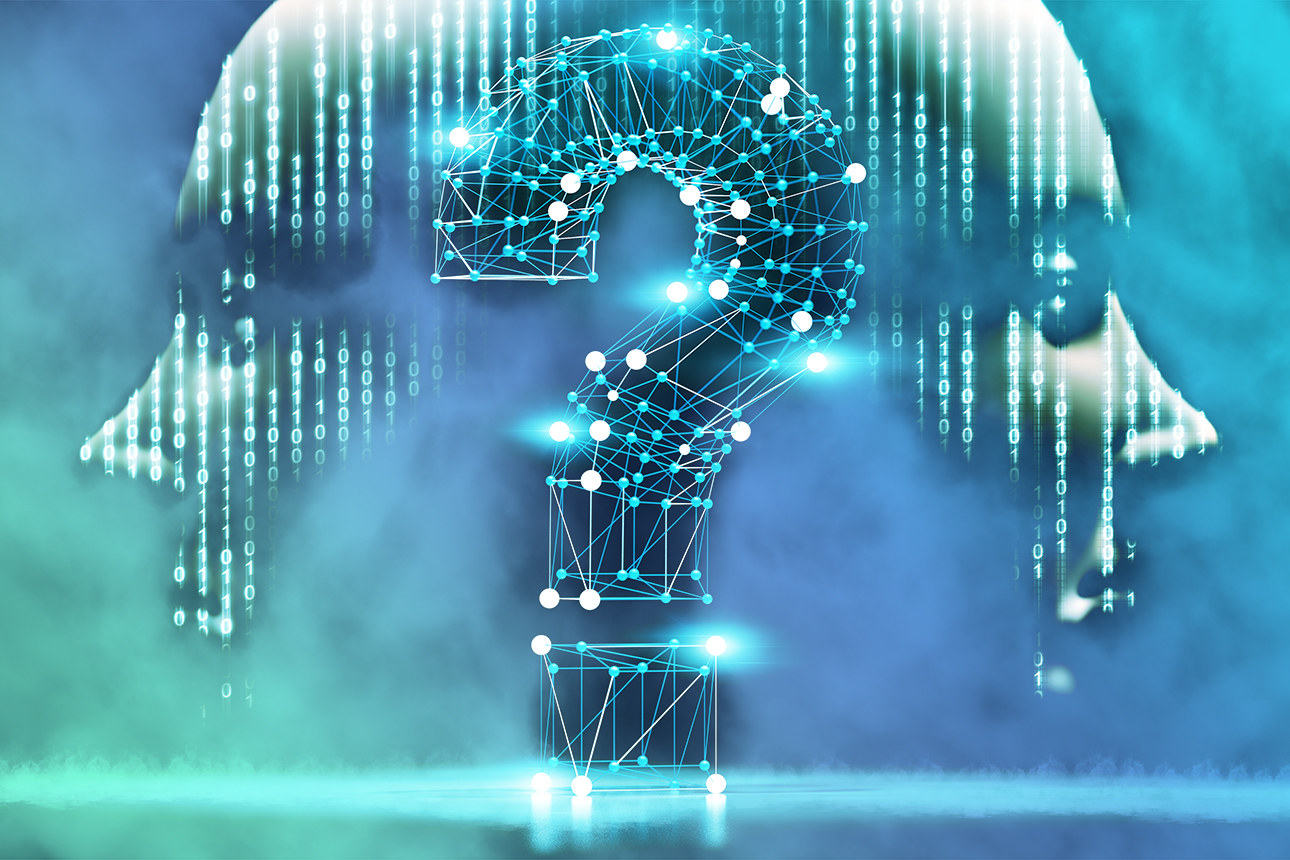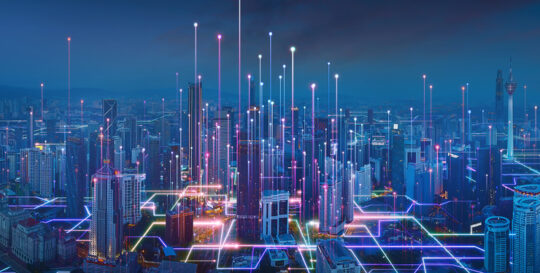What was once the stuff of science fiction is now a reality with today’s self-driving cars, digitized checkouts, and automated customer service. With each new innovation, artificial intelligence (AI) comes closer to human intelligence.
While it’s unlikely robots will take over the world, many businesses are navigating the potential competitive threat of AI technology. At the same time, some visionaries are using artificial intelligence as a tool to revolutionize their industries and make work easier.
With so much talk about AI technology, how do we effectively leverage its power? In this article, we’ll get into how artificial intelligence works – and how to make it work for your organization.
What is artificial intelligence (AI)?
Artificial intelligence is a computer program’s ability to mimic human intelligence regarding problem-solving, learning, and even creativity. AI can complete the same cognitive tasks as humans, such as understanding and responding to language through natural language processing (NLP).
Since Alan Turing helped establish the field of computer science, artificial intelligence has been a goalpost for technology. There’s even a Turing test for AI to calculate how closely a computer can mimic human intelligence. In this test, a human subject has two conversations: one with a machine and one with another person. If the subject can’t identify which conversation partner is the machine, the technology has passed the test.
The building blocks of AI
Human thinking is complex, and so is AI. Many different neural networks come together to create this field of computer science. Below, we’ll cover the current basic types of AI.
- Algorithms: In AI systems, algorithms are the coding that instructs the computer how to process datasets and perform tasks.
- Machine learning: Machine learning AI uses algorithms to process datasets and recognize patterns, then use that information to predict new data and act accordingly. Machine learning makes it possible to efficiently process the incredible volume of datasets within modern computer science.
- Narrow AI: As its name suggests, narrow AI performs specific tasks. Because narrow AI is only designed for targeted tasks, it is sometimes referred to as weak AI because of its limited intelligence. Examples of narrow AI include voice assistants like Siri and Amazon’s Alexa, image-recognition programs, customer service chatbots, and automated recommendations on Netflix.
- Artificial general intelligence (AGI): Artificial general intelligence is known as strong AI because it can solve unfamiliar problems by applying knowledge outside of its training data, giving it human-like intelligence. This technology is still in development.
- Generative AI: Generative AI can create new media – like images and art – from a text prompt. Its training data consists of similar media that it then replicates. ChatGPT is a form of generative AI drawing a lot of attention for its use cases, as it can draft content like emails and social media post captions.
Machine learning vs. deep learning
Deep learning is a subset of machine learning, but how do their generative and problem-solving applications differ?
Machine learning aims to teach artificial intelligence how to recognize patterns using training data. In this way, supervised learning creates the foundation for AI’s problem-solving automation.
Deep learning takes machine learning a step further by teaching AI how to think based on this pattern recognition. In deep learning, algorithms are layered in neural networks that work together in a way that doesn’t require continued supervised learning.
These deep neural networks act like human brain neurons to process complex datasets without human input. Because datasets run through deeper levels of learning algorithms, deep neural networks can recognize patterns and make conclusions about new data. For example, deep learning uses convolutional neural networks (CNN) for image recognition and face recognition.
Whereas machine learning relies on human correction, deep learning can learn how to correct itself. This automation creates infinite use cases for problem-solving, which is especially helpful for businesses.

How can you use AI for business?
AI uses range from the large (like decreasing traffic with self-driving cars) to the small (such as more accurate weather forecasting so you grab your umbrella when you need it). At all levels, AI tools make problem-solving and decision-making faster and more accurate.
The human brain can only process so much information before decision fatigue sets in. Each day, the average person makes over 35,000 decisions. Decision fatigue limits our ability to make intentional choices, which impacts our output at home and the office. Automating decisions like what assignment to prioritize or when to buy more milk increases our capacity for focused thought.
Artificial intelligence empowers decision-makers to make more informed business decisions. Zenithr, an AI startup in the field of human resources, is using AI tools to revolutionize the hiring process. The company applies machine-learning pattern recognition to improve talent management, retain high-level employees, and increase company performance.
Applications of AI in the workplace
Chances are you’re already using AI technology to increase efficiency in your daily life or at work. If you’ve ever used a virtual assistant like Apple’s Siri while driving to reply to a text, you know the power of AI for multitasking. Workflow automation software optimizes efficiency by automatically processing big data. AI computer systems create automation in supply chain management for real-time analysis of information like stock and delivery tracking.
For companies seeking customer interaction solutions, AI technology can increase personalization without actually needing a person. Customer service chatbots reply to questions and problems in real time and automatically escalate high-priority issues to save you and your customers time.
The machine-learning automation of product suggestions (like Netflix’s recommendations for what to watch) can also help a business make more sales. Even in the field of healthcare, which requires a human touch, virtual assistants, chatbots, and speech recognition software in online health portals make things like appointment scheduling more accessible.
On a bigger scale, AI tools are making businesses more competitive within their industries—even the creative ones. While there’s some resistance to AI technology’s potential threat of replacing human creativity, it can also allow human imagination to be realized quickly and precisely.
For example, Swiss-based flavor and perfume company Firmenich used artificial intelligence to augment creativity and develop a new flavor. Generative AI can also create more time for focused creativity by drafting emails and copywriting, brainstorming marketing materials, and visualizing ideas.
AI’s benefits and advantages
While AI’s applications are diverse, its decision-making power has many common characteristics across all use cases:
- Fast and accurate dataset processing
- Real-time response to problem-solving and information management
- Expert systems that can automate big data processing
- Quick idea visualization through generative AI
- Increased efficiency through the automation of specific tasks
- Reduction of human error
The dark side of AI
While AI systems are paving the way for a more advanced future, some disadvantages are making developers and consumers pause to consider the implications of artificial intelligence. AI systems pose potential risks to businesses, which they must consider before adopting AI technology. These include:
- Ethical considerations of plagiarism, especially in generative AI
- AI’s inability to replicate empathetic, self-aware, and situationally aware responses
- The use of AI for manipulation or misinformation, like in the case of AI-generated deepfakes
- The potential for AI-automated jobs to decrease human employment rates
- The high costs of AI software development and program licenses
Additionally, AI has a long way to go before it’s perfect. Tesla recalled over 300,000 self-driving cars because of road accidents caused by software glitches. No matter how advanced, artificial intelligence has yet to supersede good old-fashioned human reasoning.
What could be the future of AI?
While it’s unlikely AI technology will ever fully imitate human neurons, computer science is slowly but surely digitizing the decision-making power of the human brain. That’s not to say the goal of artificial intelligence is to replace human intelligence. If anything, the future of AI is about allowing us to spend more time being human through better workflows and faster problem-solving.
With constant breakthroughs in AI research, how can you optimize the right types of AI for your business? Explore IMD’s Digital Strategy, Analytics, and AI course and learn strategies to find the AI solutions that keep you on the cutting edge of your industry.
Get the latest digital transformation content in your inbox 💌



